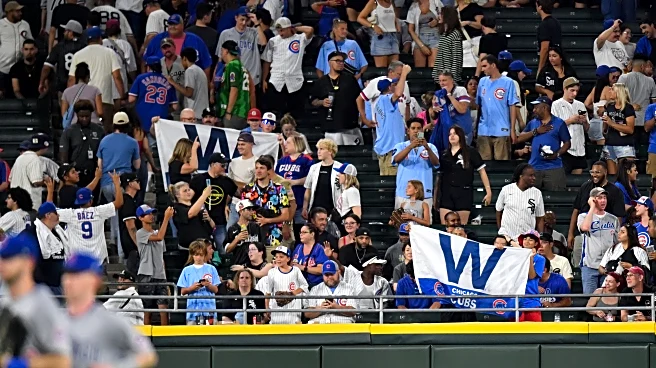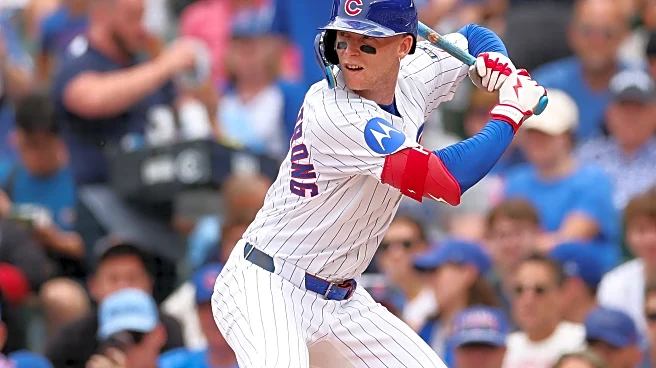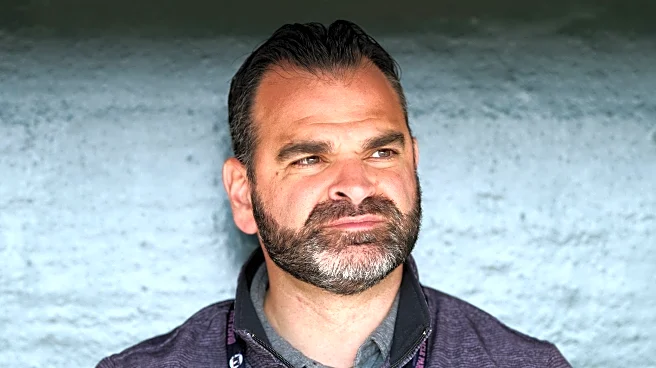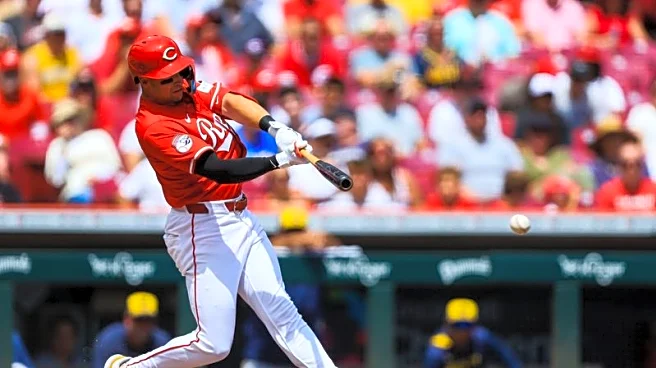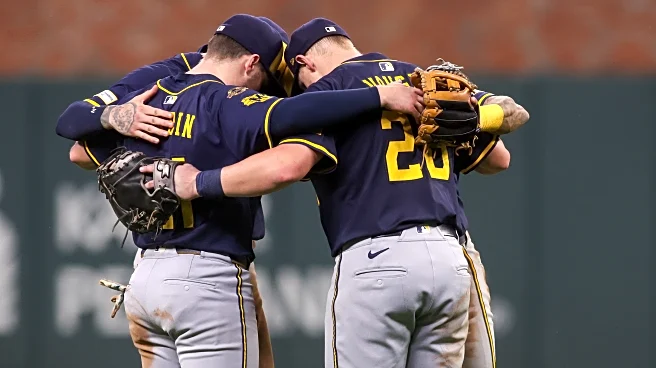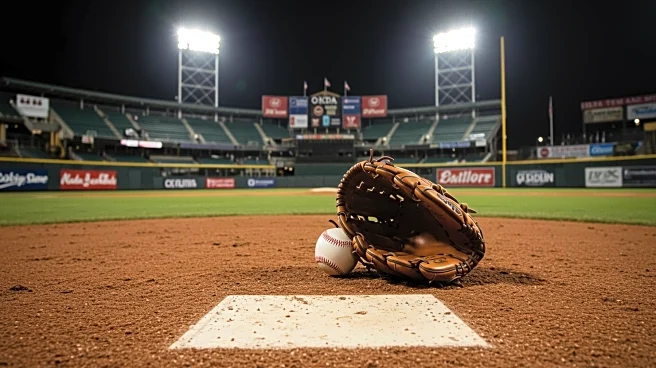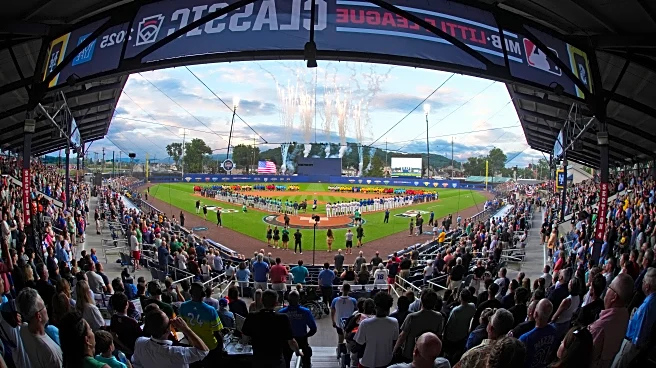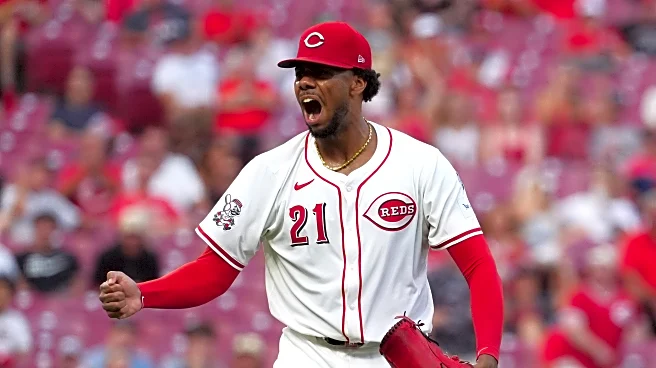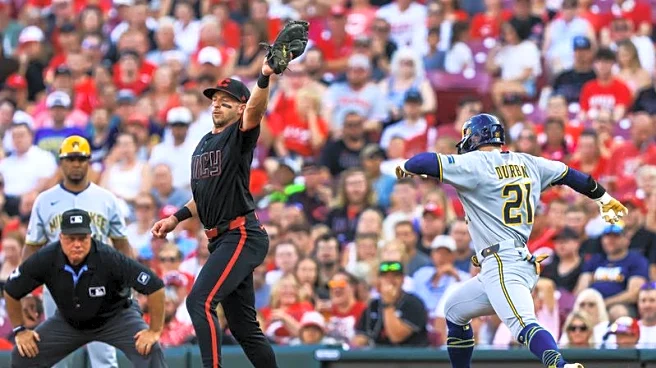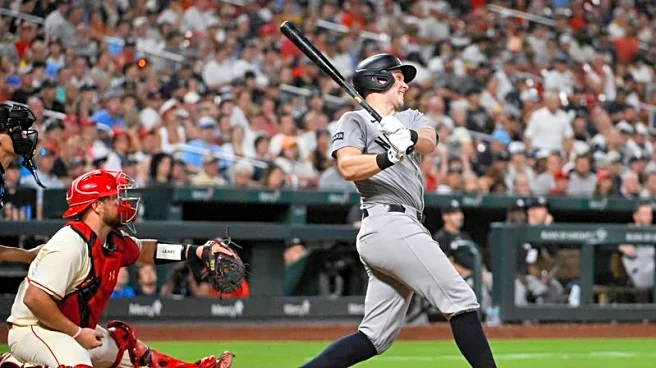
It’s another week here at BCB After Dark: the hippest hangout for night owls, early risers, new parents and Cubs fans abroad. Come on in and sit with us for a while. We don’t bite. There’s no cover charge. We still have a few tables available. Bring your own beverage.
BCB After Dark is the place for you to talk baseball, music, movies, or anything else you need to get off your chest, as long as it is within the rules of the site. The late-nighters are encouraged to get the party started, but everyone
else is invited to join in as you wake up the next morning and into the afternoon.
The Cubs were embarrassed by the Brewers today, 7-0. Cade Horton, the Cubs’ unexpected Rookie of the Year candidate, left early with a blister. Thankfully it’s not any more than that. The Cubs also lucked out in that game two was rained out, thus giving the stressed bullpen a break, as well as our collective mental health.
Last week, I asked you about the decision to call up Owen Caissie after the injury to Miguel Amaya. Fully 78 percent of you said it was the right call, whereas 19 percent of you wanted to call up Moisés Ballesteros.
Here’s the part where we listen to music and talk movies. You’ve got to admit that it’s better than talking about the Cubs at the moment.
Tonight we have the Cannonball Adderley Quintet in Norway in 1969. Julian “Cannonball” Adderley is on saxophone, his brother Nat Adderley is on trumpet, Joe Zawinul plays piano, Victor Gaskin in the bassist and Roy McCurdy is behind the drums.
Tonight’s film is a brisk noir from 1954 starring Sterling Hayden, Crime Wave. As directed by Andre de Toth, Crime Wave is a simple but stylish story that gets right to the point and doesn’t overstay its welcome.
The plot of Crime Wave is about as simple as it gets. Three convicts: Doc (Ted de Corsia), Ben (Charles Bronson—here credited under his real name of Charles Buchinsky), and Gat (Nedrick Young) all break out of San Quentin and head for the Mexican border. But they want to pull off a bank job before they go and they try to enlist their old gang member Steve (Gene Nelson) to help them. But Steve’s been out of prison for two years, has gotten married to Ellen (Phyllis Kirk) and has gone straight. He refuses, so they kidnap Ellen to force him to help. Meanwhile Hayden plays the tough-as-nails Detective Sims who is trying to bring all these criminals to justice.
That’s it. That’s the plot. I left out a few details, but nothing that’s really important. It’s a simple crime movie.
Despite the film’s simplicity, Warner Brothers wanted Humphrey Bogart and Ava Gardner to star in it, according to Turner Classic Movies’ Eddie Muller. Director de Toth said “Nah. I’d rather have Sterling Hayden and Phyllis Kirk.” Actually, he said the film would work better with relative unknowns, and I suspect de Toth knew that if the film starred Bogart and Gardner, this simple plot would have to be expanded to give those two stars more meat to chew and then the thin premise would get exposed.
So what is good about Crime Wave? The performances of Hayden as the lead cop and de Corsia as the gang leader stand out. Hayden is edgy as Sims. His character is constantly chewing on toothpicks because, as he explained, the doctor won’t let him smoke. de Toth did the same thing—forbidding the pack-a-day Hayden from smoking during working hours, so the irritability wasn’t all an act. The sets were also intentionally small to make the 6’5” Hayden look even bigger and more menacing. That it made the sets cheaper were a fine extra benefit.
Typecast as a heavy, de Corsia is appropriately malignant as Hayden’s counterpart, even though he was fourth on the call sheet. He was the big bad guy in The Naked City, a film that Crime Wave has a lot in common with. “Doc” is cooler than Sims and keeps his emotions in check better. But de Corsia lets the audience know that there’s a cold blooded killer with a hair trigger hiding between that seemingly reasonable man.
Nelson was a dancer who had acted exclusively in musicals to this point in his career. While he’s not great, he’s not bad either. Kirk puts a little more oomph into her part as the wife that made an honest man of Nelson’s Steve. Bronson is in his first credited role here and plays little more than a stereotypical cruel thug, but I have no doubt that’s what he was asked to play. He certainly already has the on-screen physical presence that would make him a star a over decade and a name change later.
The other main attraction of Crime Wave is the way that de Toth gave the film a semi-documentary feel by shooting mostly on location around Los Angeles. de Toth and cinematographer Bert Glennon were certainly influenced by what director Jules Dassin had done in The Naked City a couple of years earlier. Now de Toth had nowhere near the budget to make a masterpiece like The Naked City—the shots of mid-century Los Angeles are good, but they are fewer and less detailed than what Dassin had done. But I’ve always believed that Los Angeles, more than any other city, is the proper home for noir and de Toth does a good job capturing that noir look on the streets and alleyways of LA. According to Muller, novelist James Ellroy called Crime Wave one of his favorite movies and said it helped inspire L.A. Confidential. While that novel is a lot more ambitious than Crime Wave, if you squint you can see the resemblance, at least in the atmosphere if not the plot.
Adding to the documentary feel of Crime Wave is the minimal musical score. There are a few music cues, but most of the background noise of the film is just the sounds of the streets of LA.
I also appreciated the 74 minute runtime of Crime Wave. There was no reason to pad out such a thin plot.
Here’s the trailer for Crime Wave. They try to make the connection to The Naked City as much as they can in this trailer without mentioning a hit film made by rival Universal Pictures.
Welcome back to everyone who skips the music and movies.
Since I don’t want to talk about the Cubs because that’s nothing but misery at the moment—even though they are still the first Wild Card team, things are bad. So let’s talk about commissioner Rob Manfred, because that’s sure to bring out calm and reasonable debate.
On Sunday Night Baseball, Manfred casually dropped a bit of a bombshell, saying that upcoming expansion to 32 teams would provide the opportunity to “geographically realign.” (The Athletic sub. req. but here’s a non-paywalled story.) What this means is an end to the National and American Leagues and a geographic re-alignment along the lines of the NFL, NBA, NHL and MLS. Basically every other North American professional league. Within those conferences, there would presumably be smaller divisions of four teams.
I believe what Manfred did on Sunday Night Baseball is colloquially called a “trial balloon.” It wasn’t a serious proposal, but rather a way of dropping the issue into the public consciousness to gauge the reaction. Former commissioner Bud Selig dropped such a trial balloon back in 1997 before that more recent expansion. In the end, only the Brewers ended up switching leagues and that only happened after the Royals declined to move.
You can see why MLB likes this idea. It cuts down on travel costs and makes East Coast broadcasters (and sports radio yakkers) happy by eliminating most 10 pm start times for the Yankees and Red Sox, especially in the playoffs. You’ve never seen anyone more angry and puzzled than a New Yorker when the Yankees are opening the playoffs with a night game in Seattle. (The idea that Mariners fans would want to be home from work to watch their team sounds like complete nonsense to them as there are no Mariners fans in their mind.) Realignment would mean more games between local rivals like Yankees and Mets, Cubs and White Sox, Orioles and Nationals and Angels and Dodgers. That would presumably mean higher attendance figures as more visiting fans would be able to attend games.
MLB would also argue that while the leagues were run separately for nearly a century, the different management structures of the two leagues have been gone for over a generation now. And with the adoption of the designated hitter in the National League, there isn’t any real difference between the two leagues anymore.
Except tradition. Each league still maintains a separate record book and those records mean something to fans. Barry Bonds may have the single-season home run record, but Aaron Judge has the American League record and it was a big deal when he broke it. Winning the NL or AL title is still called “winning the pennant,” which is a feat that teams still celebrate as they have since 1901 and before. I don’t believe there’s any similar celebration for the losing teams in the NFL or NBA. (I know that the NHL has conference trophies, but the players refuse to even touch them.)
It seems like the first reactions from around the sport have been negative. That doesn’t mean it’s not going to happen. But MLB has floated other “trial balloons” in the past and not all of them have come to pass. So this isn’t a sure thing by any means. Or maybe even likely at this point.
Like it or not, MLB is a sport that cares about tradition. Radical realignment would destroy many (although not all) of those traditions. Of course, many of those traditions like pitchers batting, day games in the World Series and extra innings being played like the other nine innings have already been destroyed. I still maintain ending MLB’s tradition of not having a clock was a good thing, so I can’t argue that maintaining all traditions are good.
So what do you think? Would you go for radical realignment if it meant more games with the White Sox, Cardinals or Brewers? Or are the traditions of the Senior Circuit and Junior Circuit sacred to you?
Thank you for stopping by tonight. We’re always glad to commiserate with a friendly face. Please get home safely. Tell your friends about us. Recycle any cans and bottles. Tip your waitstaff. And join us again tomorrow night for more BCB After Dark.
